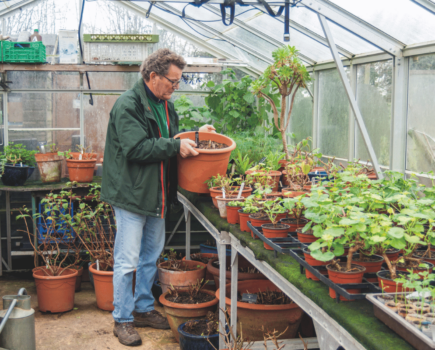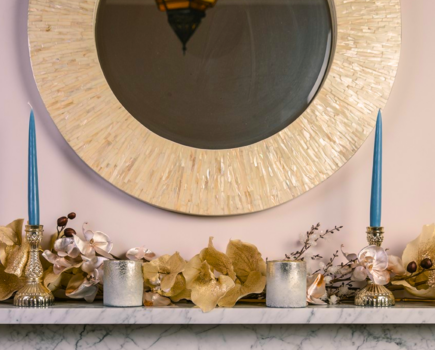No matter the size of your space, it’s possible to create an indoor garden full of lush house plants that are good for you and the environment, as well as giving mindfulness benefits. In her new book, The Indoor Garden, Jade Murray shares her tips on how to make it happen.
With a little bit of time, care and attention I believe we can all reap the benefits of what house plants have to offer. Plant care is self-care as they contribute to our peace of mind. We all should incorporate nature into our lives in one way or another, and what better way to start than by inviting nature into our indoor spaces. You can easily navigate your way through indoor plant care and successfully achieve a thriving indoor garden, bringing calm and tranquillity into your life. We all have green fingers – we just need to tap into them!
My golden rules for starting an indoor garden
When I first went plant shopping I was overwhelmed by the whole experience. I realised that I had not really thought about how plants were going to fit into my house. Just going out and randomly coming home with a plant you fancy does not work. So here I have compiled some rules to help you.
Think about your time
Owning house plants is a rewarding hobby, but a lot goes into caring for them. Think about how busy your life is. How much time do you have to water? How often do you go away. Who will care for them when you do?
Start off with three plants at most
I recommend two to three to get used to their care needs and see how they work with your lifestyle.
Consider where your plants will be
Plants require light, air, space to grow and the right temperature. A plant that thrives in warmer conditions should not be placed in a draughty location near a window. Keep plants away from radiators and air conditioning units, which will dry them out. Think whether you want the plant at floor level or eye level. A bold statement plant would look stunning displayed on its own. Avoid having your plants squeezed between furniture. This will prevent good airflow, which is needed for growth and to prevent soil mould and fungal disease.
Maximise your space
If shelf and table space is already occupied, hanging plants in baskets may work. Use low-light plants in darker areas. Adding artificial lighting to a shelf in your living room in a dark corner might help a plant to thrive. Cluster plants together on a vertical ladder shelf. Use all the space you have available: could a table or shelf be cleared? Don’t forget window ledges (as long as they are not draughty) and floors. Also remember that humidity-loving plants will do well in a bathroom with natural light.
Choose good specimens
I would recommend buying your first plant from a plant shop or garden centre rather than online. Being able to see it means you can select the perfect one for you and – even better – staff will be on hand to advise you. Some labels will specify if the plant is easy care or not.
Avoid plants with leaf discoloration, holes in leaves, etc. Check under the leaves for any pests or pest eggs. If the plant is not too tight in the pot, gently take it out and check if its roots are healthy. Healthy roots should be white or tan and appear succulent (unless they are very fine). If roots are brown and crumbly the plant is unhealthy.
Where possible, avoid any plant with roots growing through the pot or circling around the compost: it will need repotting. If there are multiples of the same plant to choose from, compare them and choose the one in best condition. Look for new growth, and how many stems the plant has. I love to see new growth on a plant I am about to purchase – a sign that it is healthy.
Select the right pot
A new plant might have been in its nursery pot for some time. It may have even outgrown it to the point that it is rootbound and will need repotting once you bring it home. If so, buy a pot 5 cm/2 inches larger than the existing one.
You can tell a plant is rootbound when you cannot pull it out of its pot. This is because all of the roots have grown and tangled themselves around the drainage holes and attached themselves to the pot. If this happens, you may have to cut up the nursery pot to free the plant.
All indoor plants need pots with drainage holes to allow excess water to drain away. A build-up of water would lead to rotting roots. Roots need not only water but air too. Soil has air pockets that are crucial for the development of healthy roots.
It’s a good idea to place your plants either on a saucer that will catch the water or into a decorative outer pot. Be sure to pour away the excess water that accumulates in the saucer or outer pot so that it is not sitting in water.








